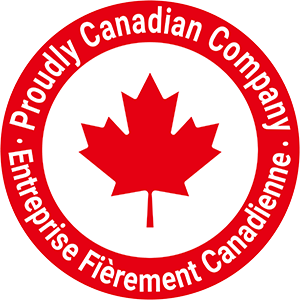How Can I Leverage Workforce Analytics?
What is Workforce Analytics (WFA)?
The best way for an organization to use an algorithm-based method of workforce analytics is to apply it directly to employee data to best optimize how you use your employees. This gives you the insight to make informed decisions about the future needs of your workforce.
Most commonly, you will find that workforce analytics are used in conjunction with talent management because they are the ones looking at the employee data closely.
Understanding how workforce analytics is different from human resources analytics:
Often people mix up the terms workforce analytics and human resources (HR) analytics, thinking they mean the same thing. There is a difference between these ideas that you should know.
The use of workforce analytics can usually be found with talent management, as they are the ones that spend their time analyzing employee data. Talent analysts rely on analytical software, when looking at what is workforce analytics, since it can create and control employee data reports.
When we talk about HR analytics, they are looking at the benefits to the overall workplace. The outcomes of this set of data can inform how an organization runs smoothly each day, where functions or policies could be reworked, and any other spots where an intelligent improvement might be necessary.
Using HR analytics, you will find that the data collected will require the need to reflect upon the larger scope of the organization, reporting and analyzing on each tier of the workplace.
How to use workforce analytics:
The algorithms programmed that allow workforce analytics to be collected and used in many Talent Management areas are the following:
Hiring
- Electronically scans resumes and pulls necessary information, saving time from having to plug in key words to search for.
- Discover pros and cons for each interested applicant by conducting social media scans and background checks.
- Automatically reveals the top candidates for the position.
- Discovers and matches skilled candidates with your current highest performing team members.
- Saves money on the hiring process since it takes the guess-work out of choosing applicants.
- The data is not interested in the gender of the candidates, therefore avoiding any biases.
Retaining Employees
- Manages, notifies, and adjusts salaries, especially those employees who have excelled and deserve recognition.
- Reviews and highlights issues indicating where there could be a breach to security policies or employee efficiency.
- Reviews and highlights indicators which could mean that an employee may be looking to quit the job.
Managing Workforce
- Creating targets for productivity and measurable goals for employees, so that both management and employees can keep track of and adjust their progress.
- Uncover areas in employees where more training and guidance would be beneficial, and implement these programs that will allow them to attain their goals.
- Keep track of the top employees that provide exceptional work, and plan projects accordingly. Doing this allows for employees to be able to play into their expertise, while coaching others how to achieve similar outcomes.
How to execute workforce analytics:
Providing the leaders of an organization with data that is not easy to understand or use will do nothing but create confusion and be a bother to them. Knowing what is workforce analytics and how helpful it can be, the next move is to get as much benefits from the data as you can. To be successful using workforce analytics, you will need to do the following:
Step 1: The best starting point is to discuss with employees about what is not working at your organization, and what issues need to find a solution.
For instance, if we create a training program that would allow for more accomplishments at work, would that boost employee engagement? Once an issue or query has been established, finding the right data and statistics will be easy.
Step 2: Figure out what data is needed for the supervisors and decision-makers of the organization, so that they can determine the best outcome for an issue or concern.
Understanding how the data should be determined:
When we look at the question asked in Step 1, the data required may be the connection between employee retention and completed levels of training programs.
Step 3: Figure out the minimum target or intent is for the question or concern.
To be successful with your analysis, it is important to have years of data collected for these standards and goals, so that you are referring to comparable information. When looking back at the question asked in Step 1, the minimum target may be the passing of a certain employee training program.
Step 4: Determine how to understand and communicate the data.
For the best results of the workplace analysis, it is important to figure out the ranges or factors that best determine or graph your data. To find the areas of the organization where employees could benefit from training, the factors might be the overall completion level for training across all divisions, what the minimum standards are for each division, as well as how the results from staff member surveys. Are employees happier at the workplace for those who have finished and passed their training programs, compared to those that have not completed the training levels?
What are the advantages of using workforce analytics for your business?
Using workforce analytics can assist workplaces to become better equipped to handle any issues or teachings regarding employee management. The following is a list of some of the advantages of using workforce analytics at your place of business:
- Qualify interested applicants to see if they will be a good fit with the business needs and the workplace environment.
- Opportunity to determine which members of your staff are on track to becoming highly effective employees. The results will guide you so that you will know how to best provide those employees with the tools they need to succeed and grow within your organization.
- Understand what the long term needs of your workplace are, so that you can easily determine what types of roles you will need to fill.
- Understand what the measurements are to determine if staff members are effectively handling their job, and if they are fulfilled with their work, thus being able to make a positive change that makes for a more uplifted workforce.
- Determine and make note of interesting candidates for future endeavors.
Workforce Analytics Use Cases:
Workforce Operations
We looked at one example of a company that wanted to get a better sense of how employee performance in essential workers was affecting clientele and their transactions by using workforce analytics.
The company wanted to learn: what aspects increase selling behaviour and leaves the consumer pleased with their outcome?
The information gathered consisted of human dispositions, manager’s daily functions, as well as how clients interact and conduct themselves with the business.
The determining factors were then compared against incentives such as if they were bonus-driven and available skill development so that staff can decide if there is a correlation between them.
The outcome of this investigation points out that employee development is a top ranking indicator for higher results in client happiness and an increase in revenue. The results also show that one of the indicators with the worst scores proved to be that money did not actually drive people to push themselves much harder.
Other indicators that were revealed to weigh in on behaviour when this investigation was conducted were how long a person was working on that day, as well as their natural disposition.
Having gained this precious data tool, the business studied was able to make decisions that were wiser when it comes to overseeing their employees in the sales department. The analysis also allowed for a vision that leads to more positive growth in daily functions.
Retaining Employees
In this instance, we look at another organization that was eager to discover solutions to their issue of constantly changing high-level employees.
In order to study the information pulled, which included statistics on past hiring practices, employee growth, their function in the organization, achievement history, wages, defined duties, and area, one needs to use an algorithm.
This organization wanted to include information that they recovered from a different information source that would determine where their staff was able to have events and time together to interact.
The organization wanted to find out: what are the indicators that can be used to prove what to look for when a staff member might be looking to quit?
The results proved that there was a higher likelihood that a staff member will leave the organization if they do not have opportunities to engage with other employees.
Having this evidence in hand, this organization was able to make better decisions going forward, and rectified these issues, with a drop of 25% of time spent on finding and training new staff.
Hiring Employees
There is a business in Amsterdam that has created a program using workforce analytics, which aims to function best when looking at hiring practices.
The instrument that they created asks interested candidates sixteen thorough questions to answer, so that their information is collected on workplace desires, where they see themselves moving up in the company, work stability, work perks and bonuses, as well as pay rate.
This program scours through the application documents to create a detailed profile for each candidate that shows their educational background and any practical skills that may make the candidate a good fit.
In order for a business to successfully implement the workforce analytical tool, they must first know what is needed for a certain position and what type of person would be the best fit for that job. The hiring manager must know what are the indicators that they care about when assessing interested applicants.
When a business meets the requirements of an interested applicant, then it is more likely that the target applicant will take the job and will commit to them.
Related Blogs
How to Decide Who to Layoff?
How to Decide Who to Layoff? A Strategic Guide Powered by The Predictive Index In uncertain economic climates, tough decisions often become necessary for business continuity. One of the most challenging decisions any organization faces
HR Risk Management – Full Guide
HR Risk Management: A Full Guide with The Predictive Index Advantage In today’s volatile business environment, human capital remains one of the greatest assets—and one of the biggest risks. Organizations are navigating an increasingly complex
9 Tips for Hiring the Best Salesperson
9 Tips for Hiring the Best Salesperson (Backed by The Predictive Index) Hiring the right salesperson can feel like trying to find a needle in a haystack. Sales is a high-stakes role where the right



